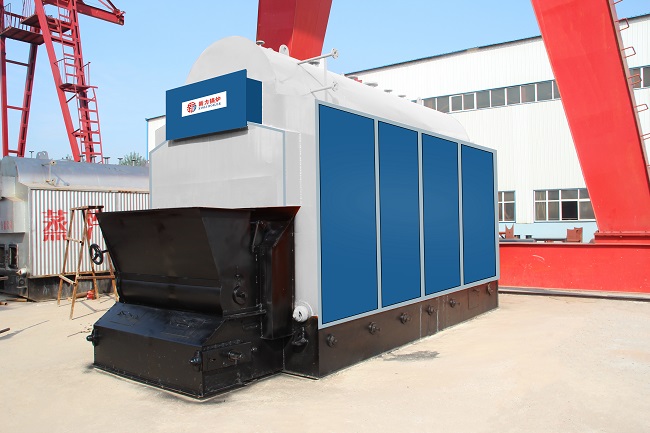Guide: Commonly used waste heat boilers use flue pipe heat exchange, and the temperature of the lower wall of the metal heating surface is roughly in a multiple relationship with the discharge temperature of the hot fluid. Regarding the smoke tube heat exchanger, if the metal heating surface wall temperature is required to be no less than 150°C, the exhaust gas temperature is usually not less than 300°C, otherwise it will cause low-temperature condensation and corrosion.
Commonly used waste heat boilers use flue pipe heat exchange, and the temperature of the lower wall of the metal heating surface is roughly in a multiple relationship with the discharge temperature of the hot fluid. Regarding the smoke tube heat exchanger, if the metal heating surface wall temperature is required to be no less than 150°C, the exhaust gas temperature is usually not less than 300°C, otherwise it will cause low-temperature condensation and corrosion.

Considering that the equipment is operating at a lower temperature, the exhaust gas temperature of the waste heat boiler is not less than 450 ℃ based on the safety factor of 1.5 times. At this time, the waste heat boiler can recover about 0.5 tons of heat, and the recovery efficiency is still very low. In addition, the temperature at this time is only a check temperature. When the operating conditions need to be adjusted due to operating requirements, there is no way to directly adjust and control the wall temperature.
When the temperature of the metal wall on the heating surface at the tail of the waste heat boiler is lower than the condensation point of sulfuric acid vapor, liquid sulfuric acid will be formed on the surface. For a long time, corrosion caused by condensation on the heating surface of the tail of the heat exchange equipment has often occurred. As a result, in the design of the waste heat boiler, the exhaust gas temperature can only be improved or the use of non-metallic materials with poor heat transfer to reduce the occurrence of condensation and corrosion, but the problem is still not basically solved. Nevertheless, the waste heat recovery equipment will often show corrosion after one to two years of operation until it is perforated.
The gravity heat pipe waste heat boiler was once implemented. Although it can use its isothermal heat transfer characteristics to reduce the exhaust gas temperature at some levels, but the lower wall temperature of the heating surface at its tail will still be lower than the acid dew point temperature, which cannot prevent condensation. Corrosion, and the heat pipe generally produces and accumulates non-condensable gas and gradually ages, and gravity causes uneven thickness of the heat transfer liquid film to cause unstable heat transfer.
Because the heat pipe is vacuum, the fluid resistance is very small, and the distance between the inner and outer layers of the ring heat pipe is only 10 mm, so the heat transfer speed is very fast, and a large amount of heat energy is transmitted through its small cross-sectional area at long intervals without additional power. Due to the common structure of the annular heat pipe, it is widely used in the thermoelectric industry, chemical and petrochemical industry, power engineering, textile industry, glass industry, and electronic and electrical engineering.




























